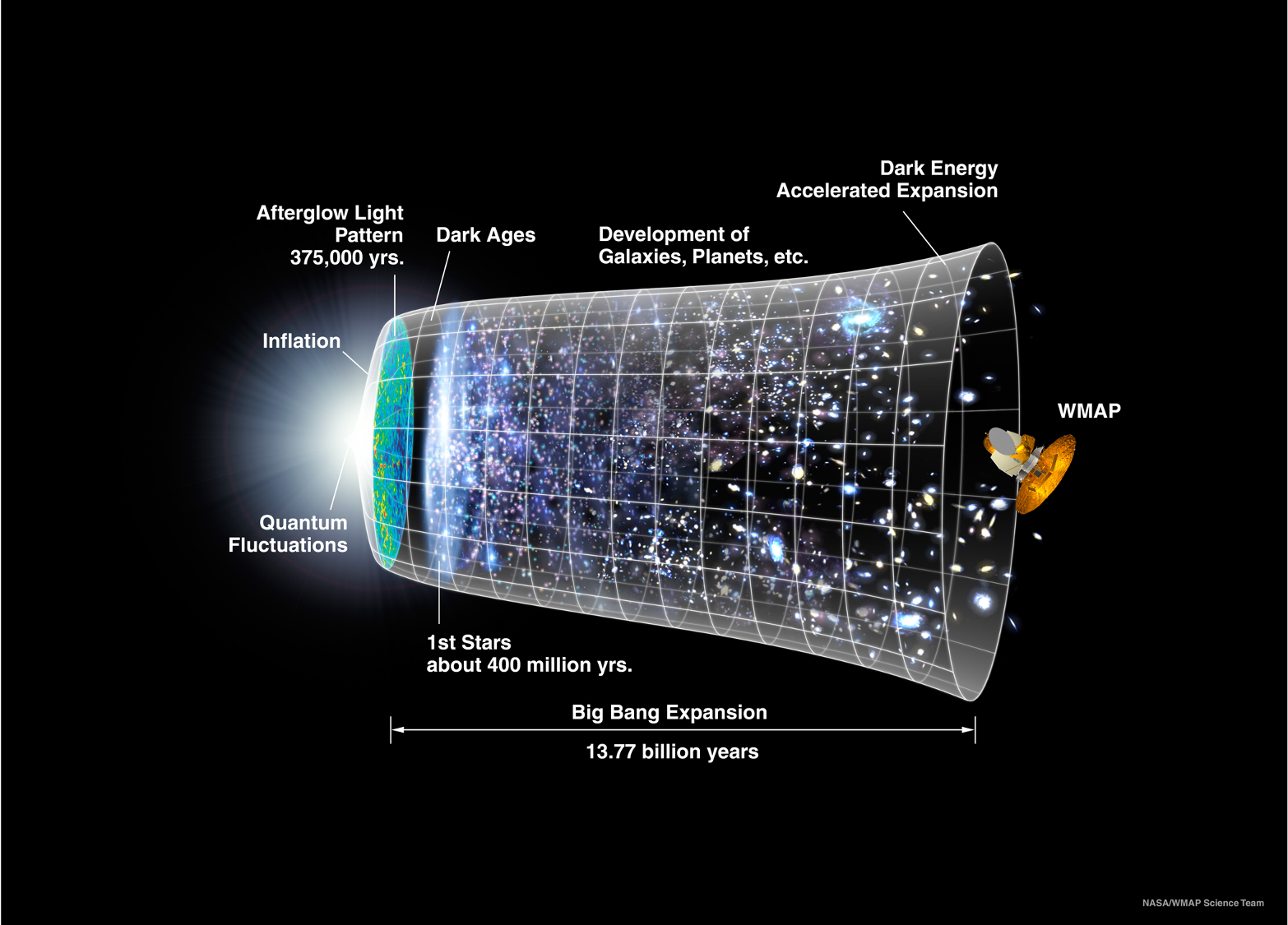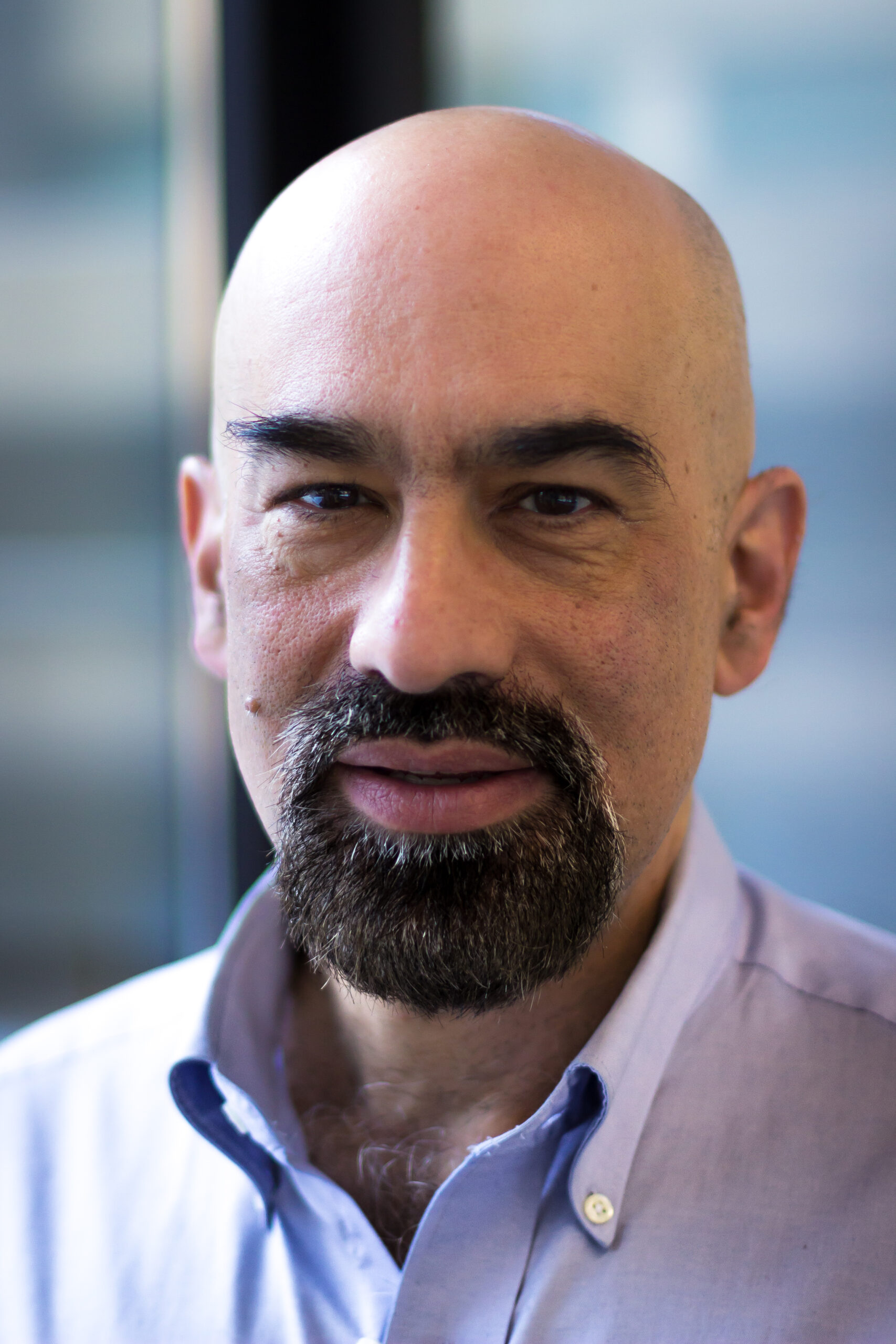Lessons from the Universe’s Baby Picture
Our simple and strange universe
David Spergel
President
Simons Foundation
Sponsored by PSW Science Member Michael Sandifer
About the Lecture

Over the last several decades, we have learned that our universe is both simple and strange. Five basic numbers describe the basic properties of the universe: its age, the density of matter, the density of atoms, the amplitude of fluctuations in the density, and how they depend on scale. With these numbers, we can basically fit all of the observations in cosmology. This simple universe is filled with mystery: we don’t know what makes up 95% of the mass of the universe; we don’t understand why there is more matter than anti-matter; we don’t understand the universe’s origin or its fate. This lecture will describe how observations of the cosmic microwave background – the left over heat from the big bang – give us novel insights into the universe’s history and evolution.
About the Speaker

David N. Spergel is the President of the Simons Foundation.
Spergel received his undergraduate degree from Princeton in 1982 (summa cum laude, Phi Beta Kappa). After a year of study at Oxford University, he received his PhD from Harvard in 1985. After two years as a long-term member at the Institute for Advanced Study, he joined the Princeton astrophysics faculty in 1987, where he was also Associate Faculty in the Departments of Physics and Mechanical and Aerospace Engineering. He served as Department Chair from 2006 to 2016. During his term as chair, the department was consistently ranked as #1 by US News and World Reports and by the NAS. He is the Charles Young Professor of Astronomy Emeritus at Princeton University and was the Founding Director of the Center of Computational Astrophysics at the Flatiron Institute in NY. In 2016, he became the Founding Director of the Center for Computational Astrophysics. In 2021, he assumed leadership of the Simons Foundation.
Spergel is a fellow of the American Physical Society, a Legacy Fellow of the American Astronomical Society, a member of the American Philosophical Society, National Academy of Sciences and the American Academy of Arts and Sciences, and has been awarded the MacArthur Fellowship, the Breakthrough Prize, the Gruber Prize, the Shaw Prize, Sloan Fellowship and the Presidential Young Investigator award. The American Astronomical Society recognized his contributions with its Warner Prize, the Heinemann Prize and his selection as its inaugural Kavli Lecturer. Time Magazine listed Spergel in its 2001 issue as one of America’s top scientists and in its 2012 issue as one of the 25 most influential people in Space. Spergel has served as chair of the NAS Committee on Astronomy and Astrophysics, the NAS Space Studies Board, NASA Astrophysics subcommittee, and as a member of the NASA Advisory Council. For his contributions to NASA, he was twice awarded the NASA Exceptional Public Service Award. He received a D. Sc. (Hon) from the American Museum of Natural History.
Spergel was one of the leaders of the Wilkinson Microwave Anisotropy Prove (WMAP), which measured the age, shape and composition of the universe. Spergel served as co- chair of the Roman Space Telescope (formerly, WFIRST) science team. He has played a significant role in designing the coronagraph and in shaping the overall mission.
He has been the primary mentor for over 33 graduate students, 45 postdoctoral fellows and 60 undergraduates. His mentees are now faculty members at Barcelona, Cambridge, Cardiff, Columbia, Cornell, Cooper Union, Harvard, Max-Planck Institute, NYU, Oxford, Rutgers, UCSB, UCSD, UCL, USC, Texas Tech, U Tokyo, U Toronto and U Washington. His mentorship has been recognized by Princeton’s Presidential Distinguished Teaching Award and the National Society of Black Physicists’ mentorship award.
Spergel is the author of over 400 papers with over 115,000 citations and an h index of 127.
Social Media Acc’ts
Webpage: https://www.simonsfoundation.org
Twitter handle: @DavidSpergel
Minutes
On May 3rd, 2024, in the Powell Auditorium of the Cosmos Club in Washington, D.C., President Larry Millstein called the 2,495th meeting of the Society to order at 8:03 p.m. ET. He began by welcoming attendees, thanking sponsors for their support and announcing new members. Scott Mathews then read the minutes of the previous meeting which included the lecture by Rich Pyle, titled “Diving Deep into Biodiversity: Leveraging the Latest Technology to Explore Deep Coral Reefs”. The minutes were approved as read.
President Millstein then introduced the speaker for the evening, David Spergel, of the Simons Foundation. His lecture was titled “Lessons from the Universe’s Baby Picture”.
The speaker began by stating that “Our universe is both remarkably simple and remarkably strange,” and that the talk would emphasize what we have learned in the past 20 years from studying the cosmic microwave background (or CMB), the heat leftover from the Big Bang. He said that 5 numbers determine all the large-scale properties of the observable universe: the age of the universe, the density of atoms, the density of dark matter, the “lumpiness” of the universe, and how the lumpiness varies with scale.
Spergel then discussed the strangeness of the universe and the things we do not understand, including: Dark matter, dark energy, matter-antimatter asymmetry, how the universe began, and what drove early expansion.
The speaker then said that one of the big questions in the field of cosmology is what came before the Big Bang. He said that there are two possible answers: time began at the Big Bang, so there is no “before”, or the Big Bang was actually preceded by the “Big Crunch”. He said “At this point, we do not know.”
Based on the assumption that the universe is uniform and isotropic, Spergel presented a quick history of the universe: it started out hot, dense, and filled with radiation, as it expanded it cooled, in the first few minutes light nuclei formed, after 400,000 years atoms formed, after 100 million years stars began to form, after 1 billion years galaxies formed. He said that looking at the cosmic microwave background (or CMB) is effectively looking at the universe when it was about 400,000 years old, as that was the point when the universe became transparent to electromagnetic radiation. This is the “baby picture” he refers to in the title of the talk.
Spergel discussed the fact that measuring the fluctuations in the CMB allows the determination of the curvature of the universe, and gives an indication of whether the universe will continue expanding, reach a maximum and remain static, or reverse course and collapse. He said that the current model of the universe combined with the statistical observations of the CMB indicate a universe that is 13.77 billion years old, 5% atoms (or baryonic matter), 25% dark matter, and 70% dark energy, with scale invariant fluctuations.
Spergel commented that while the quality of the data acquired from both satellites and ground based telescopes has improved dramatically over the past 20 years, the model of the universe and the numeric parameters calculated from the data have changed very little. He concluded his talk by saying that cosmologists are historians, looking back in time, who have constructed a simple model of the universe that seems to fit all the observations, and that the model is based on aesthetic principles of mathematics which seem to work remarkably well.
The lecture was followed by a Question and Answer session:
A member asked about the CPT theorem and whether symmetry principles would imply that the universe would contract. Spergel responded that the universe cannot be CPT symmetric due to both matter-antimatter asymmetry and the weak interaction, which has been demonstrated to be CP-violating.
A guest asked first about the units of lumpiness, and second about the “Hubble tension”. Spergel said that “lumpiness” corresponded to fluctuations in temperature, and that the amplitude of these fluctuations was on the order of one part in 105. Spergel explained that the expansion rate of the universe, the Hubble constant, should have a value of about 68, based on CMB data. The Hubble constant can also be estimated from Cepheids, a type of pulsating star, which yields a value of 72. The difference is the Hubble tension. Spergel said that if future measurements show these two values converging, to a value of about 70, the Hubble tension disappears, whereas if these two values are actually different, it indicates a problem with one of the models.
A viewer on the livestream asked about gravitational waves and the insight they might provide on the early universe, when combined with CMB data. Spergel commented that the upcoming LISA mission (Laser Interferometer Space Antenna) could potentially provide information about gravitational fluctuations in the early universe, and that the scale and amplitude of such fluctuations might complement the observations of fluctuations in the CMB.
After the question and answer period, President Millstein thanked the speaker and presented him with a PSW rosette, a signed copy of the announcement of his talk, and a signed copy of Volume 1 of the PSW Bulletin. He then announced speakers of up-coming lectures, made a number of housekeeping announcements, and invited guests to join the Society. He adjourned the 2495th meeting of the society at 9:35 pm ET.
Temperature in Washington, DC: 14.4° Celsius
Weather: Mostly cloudy
Audience in the Powell auditorium: 72
Viewers on live stream: 22 …for a total of 94 live viewers
Views of the video in the first two weeks: 717
Respectfully submitted, Scott Mathews: Recording Secretary